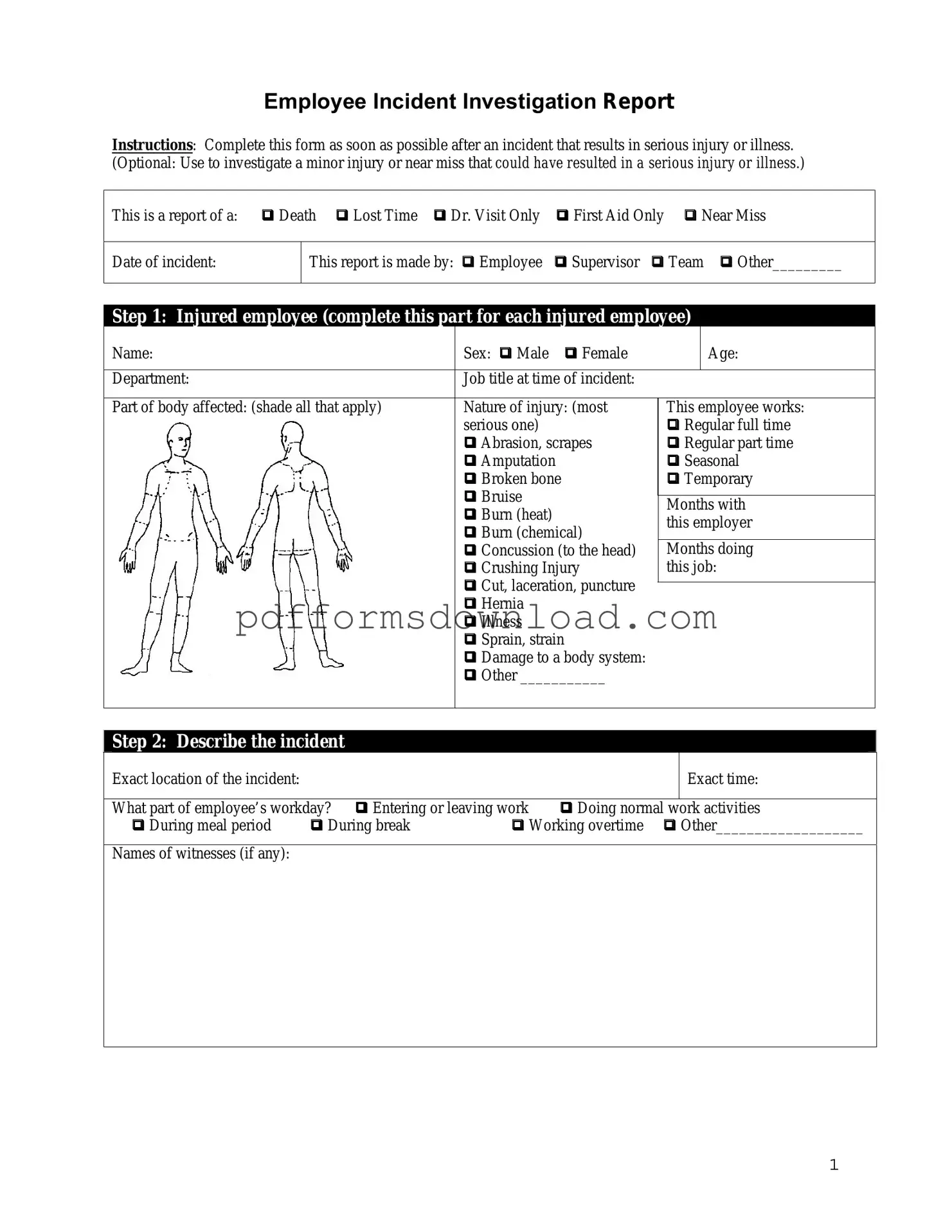Download Employee Accident Report Template
The Employee Accident Report form is a crucial document used to record details of workplace accidents. This form helps ensure that incidents are properly documented, allowing for better safety measures in the future. To contribute to a safer work environment, please fill out the form by clicking the button below.
Make This Document Now
